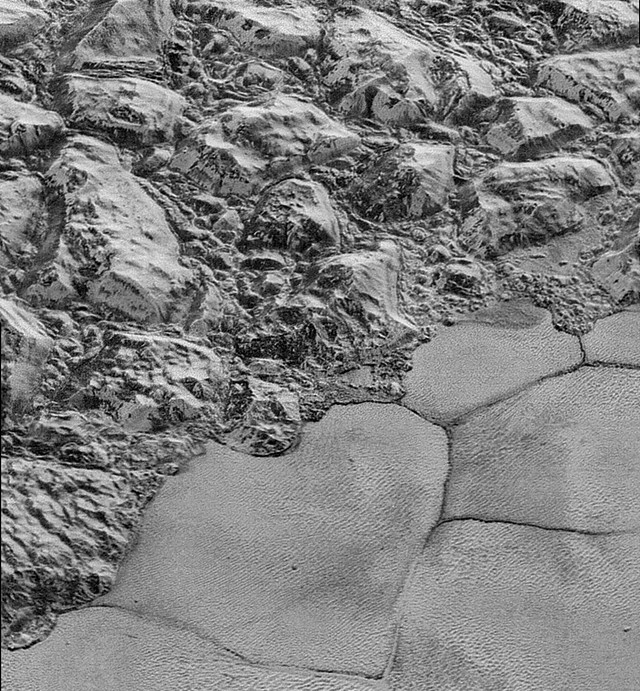
by Adityarup "Rup" Chakravorty Monday, September 10, 2018

Images from New Horizons' 2015 flyby of Pluto show evenly spaced ridges that look like sand dunes. Credit: NASA.
Images and data sent back by NASA’s New Horizons spacecraft during its flyby mission to Pluto (and beyond) show a series of regularly spaced linear ridges sandwiched between a mountain range and Sputnik Planitia, a vast plain of nitrogen, carbon monoxide and methane ice. “When we first saw the New Horizons images, we thought instantly that these were dunes, but it was really surprising because we know there is not much of an atmosphere [on Pluto],” said Jani Radebaugh, a planetary scientist at Brigham Young University and co-author of a study in Science announcing the findings, in a statement.
Despite Pluto’s thin atmosphere — pressure at the surface is about 100,000 times less than on Earth — the study hints that the winds on Pluto can still shape dunes of frozen methane “sand.” Mathematical modeling indicated that Pluto’s winds would be strong enough to transport sand-like particles once they are airborne. But the winds couldn’t lift the particles initially; a different process would be needed to do so.
The researchers hypothesize that sublimation of nitrogen ice into gas can lift methane ice particles between 200 and 300 microns in size off the surface. Then, Pluto’s moderate winds take over.
“The considerably lower gravity of Pluto, and the extremely low atmospheric pressure, mean the winds needed to maintain sediment transport can be a hundred times lower [than on Earth],” said study co-author Eric Parteli, a computational geoscientist at the University of Cologne in Germany.
While Pluto may not be the most surprising celestial body to host dunes — researchers have even detected dune-like ripples on the comet 67P/Churyumov-Gerasimenko — “we didn’t know what we’d find on Pluto,” said Matt Telfer, a geographer at the University of Plymouth in England and lead author of the study. “It turns out that even though there is so little atmosphere, and the surface temperature is around minus 230 degrees Celsius, we still get dunes forming.”
© 2008-2021. All rights reserved. Any copying, redistribution or retransmission of any of the contents of this service without the expressed written permission of the American Geosciences Institute is expressly prohibited. Click here for all copyright requests.